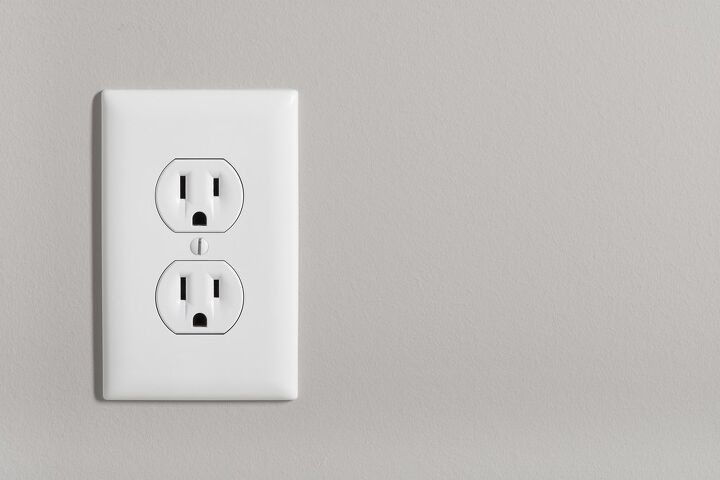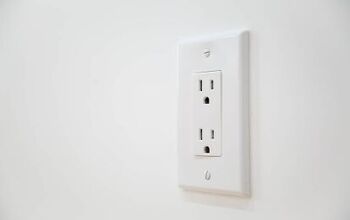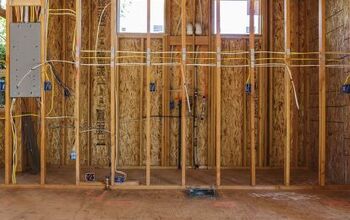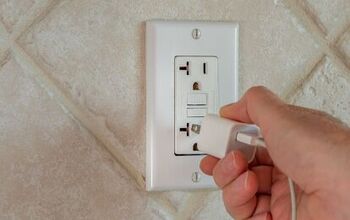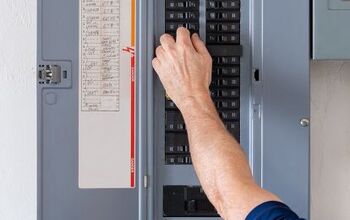How Many Outlets Can Be On A 15 Amp Circuit? (Find Out Now!)

Outlets allow us to power the modern necessities in life, running electricity to our lighting, appliances, or phone chargers. Having outlets in convenient locations around the house is ideal and can help make life easier. In most modern homes, there is usually at least one outlet on every wall. To keep homes safe, code dictates how many outlets can go onto a 15 amp circuit, standard for most homes.
The national code does not have a specific limit for the number of outlets that can safely connect to a 15 amp circuit. However, code does demand that a circuit cannot exceed 80% of its maximum amperage. Because a single outlet uses 1.5 amps, it is possible to put 8 outlets on a 15 amp circuit.
If your home has not exceeded the maximum number of outlets on a 15 amp circuit, adding extra outlets to your room may be possible. This procedure is a simple DIY project that many homeowners can do themselves. Adding more outlets to your 15 amp circuit can give you more convenient options for powering devices throughout your home. Of course, you can also contact a licensed electrician to help you install additional outlets on your existing circuit.
Do You Need Electricial Wiring or Panel Upgrade Services?
Get free, zero-commitment quotes from pro contractors near you.

What Does National Code Dictate for A 15 Amp Circuit?
The National Electrical Code, often abbreviated to NEC, does not put a hard limit on the number of outlets that can go onto a single circuit. However, they do state that a single circuit cannot supply more than 80% of the circuit’s limit. This statistic means that a 15 amp circuit cannot exceed 12 amps. This restriction is to prevent a circuit from constantly tripping and cutting power.
The usual outlet will draw about 1.5 amps of power at a single time, although it is possible to spike beyond this. It is possible to have 8 outlets on a single 15 amp circuit, safely drawing enough power to keep the circuit running without tripping. If you require more outlets on a single circuit, upgrading your circuit to 20 amps will allow you to have 10 outlets on a single circuit. 20 amp circuits are usually recommended for kitchens that run powerful appliances like refrigerators.
How Many Outlets Are In a Bedroom?
Usually, for newly built homes, outlets will be about every 6 feet on the wall. Every wall in the bedroom will have at least one outlet. It is also common to have an outlet or junction box on the ceiling to accommodate a ceiling fan or overhead light.
A master bedroom may end up with 7 outlets along the walls and an 8th outlet on the ceiling for a light fixture. Maintaining the code required, 8 outlets can still run on a single 15 amp circuit.
Can I Run a Refrigerator on a 15 Amp Circuit?
Being able to run a large appliance, like a refrigerator, is perfectly possible with a 15 amp circuit. While a refrigerator is large, it will only draw between 3 and 6 amps at one time. However, it is possible to have your refrigerator create a spike in energy demand, especially if it is trying to cool or make ice. A refrigerator can peak at 15 amps. While a refrigerator can certainly run on a dedicated 15 amp circuit, it is good to run a refrigerator on a 20 amp 120-volt circuit to maintain 80% maximum capacity for the circuit.
What Happens If You Have Too Many Outlets On One Circuit?
Adding too many outlets can cause you to overload the circuit, especially if all the outlets are drawing power simultaneously. Overloading a circuit can sometimes happen inadvertently if you are running two power-heavy appliances at the same time. In most cases, for a correctly functioning breaker box, your circuit will simply trip and turn off to prevent the circuit from overloading.
However, circuits that are not properly functioning will fail to trip, which could have large and dangerous implications. If your circuit is overloaded and your circuit breaker does not trip correctly, you could potentially risk an electrical fire in your home. Always be sure to keep your outlets at 80% the maximum amount the circuit can handle. While most circuit breakers will function as they should, you do not want to run the risk of fire in your home.
How Can I Add a New Outlet To My Circuit?
Adding new outlets to your home is a great way to increase usable space. A new outlet can make it more convenient to plug in a light or give you room to plug in a charger or computer. Most homeowners can add a new outlet to their homes relatively easily. Of course, always be sure that your circuit can accommodate additional outlets.
To install a new outlet on an existing circuit, you must:
Step 1: Turn off Power
At the circuit breaker box, shut off the power to the circuit you will be working with. To confirm that you have shut off the power to the correct circuit, use a nightlight on an existing outlet on the same circuit to verify the power has been cut off.
Step 2: Remove Existing Wall Outlet
Take the cover plate and housing off an existing wall outlet on the same circuit. You will have to remove the outlet from the wall and remove the wall wires connecting it to the existing circuit. Disconnect the back of the outlet box and knock out the additional hole to allow you to feed a wire through the back.
Step 3: Feed New Wire
Feed the new cable through the back hole on the box of the existing outlet. You’ll need enough cable to reach the new outlet location, plus an extra foot of cable to make your new connections. Use a 14-gauge wire if you are working with a 15 amp circuit. This wire will be durable enough to handle the power load from a 15 amp circuit.
Step 4: New Connection
Now you will need to connect the new cable wire to the existing outlet wires. You’ll want to strip back and expose about 10 inches of the new cable to make sure you have a solid connection. Connect the white wire to the white, the black wire to the black, and ground to ground. Ensure you encase the new connection bundles with plastic wire screws to keep the connections safe and secure.
Step 5: Wire New Outlet
Next, find your location for your new outlet and cut a hole in the drywall large enough to accommodate the outlet box. Fish the new cable through the wall, and reconnect the ends to the news outlet. Make sure to connect each wire to the appropriate connection within the outlet box, and ensure the ground wire is appropriately grounded.
Step 6: Reconnect and Test
Once your connections are secure, reconnect the outlet screws and outlet faceplates for both your new outlet and your existing outlet. Turn the power to the circuit back on and test the outlets to ensure you have power running to the existing outlet and your added outlet. You can use a nightlight or a lamp to determine if a circuit is working correctly.
How Do I Know What Type of Outlet I Need?
If you are installing additional outlets on your circuit, you will first need to know what type of outlet to purchase. There are several options, and outlets can be rated for different amperage. Outlets you buy at the local hardware store will be rated for either 15 amps or 20 amps. Before purchasing your outlet, look at the circuit breaker. Locate the circuit you will be adding new outlets to and see if you are working with a 15 amp circuit or a 20 amp circuit.
If you are installing a new outlet in a room with moisture, such as a kitchen, laundry room, or bathroom, be sure you buy a GFCI outlet to meet the national building code. These are specially designed outlets that have a test and reset button on them. They work to turn off quickly if moisture gets into the outlet, interrupting the circuit. These outlets are a safety measure that is required by modern code.
Do You Need Electricial Wiring or Panel Upgrade Services?
Get free, zero-commitment quotes from pro contractors near you.

Related Questions
How many outlets can go on a 20 amp circuit safely?
The short answer to this question is 10 outlets. Usually, each outlet will draw about 1.5 amps. This feature means, adding 10 outlets should draw about 15 amps to a circuit. Maintaining the rule of staying at about 80% of the maximum capacity for the circuit, 10 outlets will allow you to reach your maximum draw on the circuit.
What is the code for outlets in kitchens?
Working with new outlets in the kitchen can require more detailed code requirements. Increased requirements are based on more electrical draw and the chance of water mixing with electrical current.In a kitchen, you must have an outlet installed around the counter area if there is a wall space of 12 inches or more. There can be no more than 2 feet, or 24 inches, measured across from one outlet to another. Outlets in the kitchen must be GFCI for added safety measures.
Related Articles

We are a team of passionate homeowners, home improvement pros, and DIY enthusiasts who enjoy sharing home improvement, housekeeping, decorating, and more with other homeowners! Whether you're looking for a step-by-step guide on fixing an appliance or the cost of installing a fence, we've here to help.
More by Upgraded Home Team



